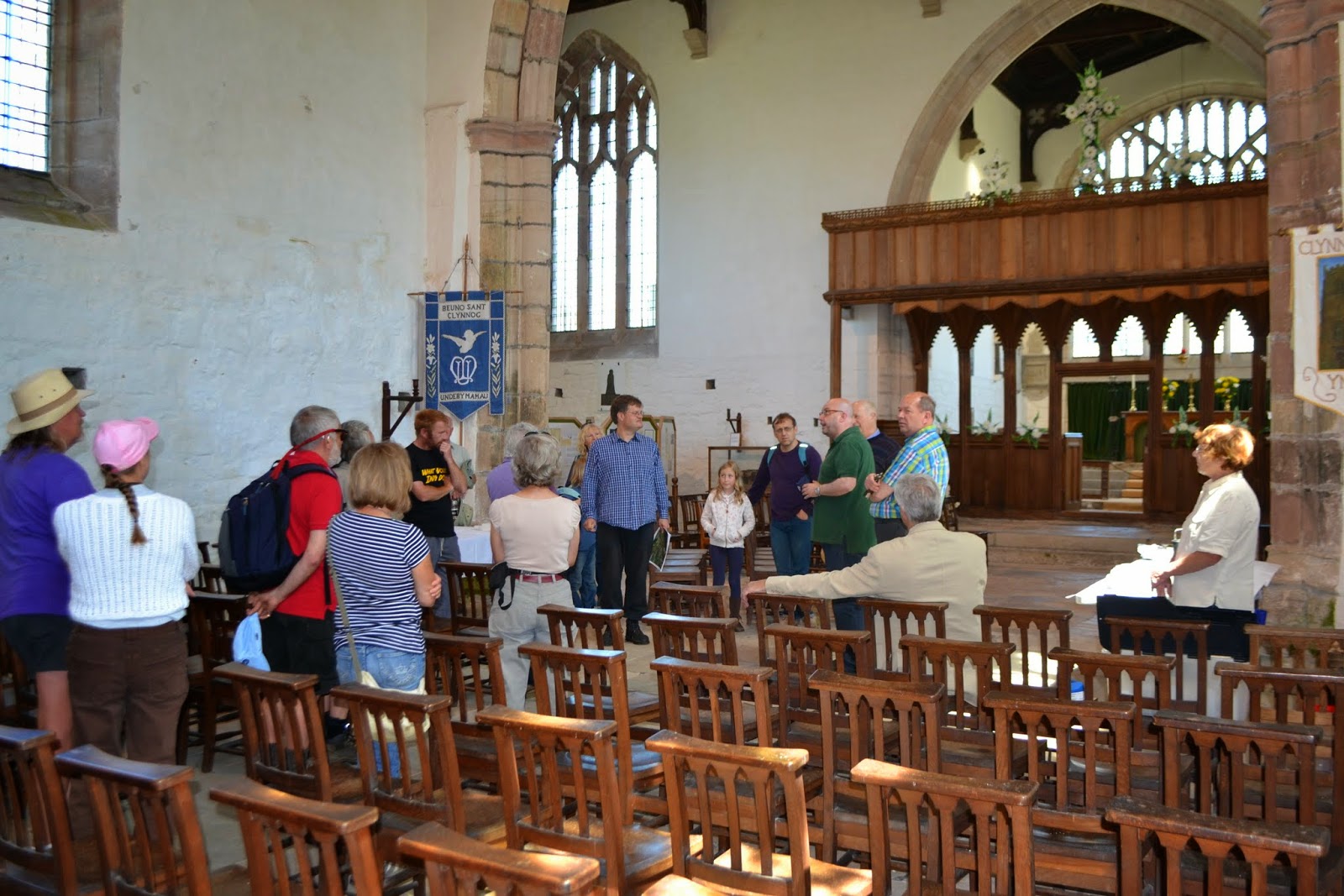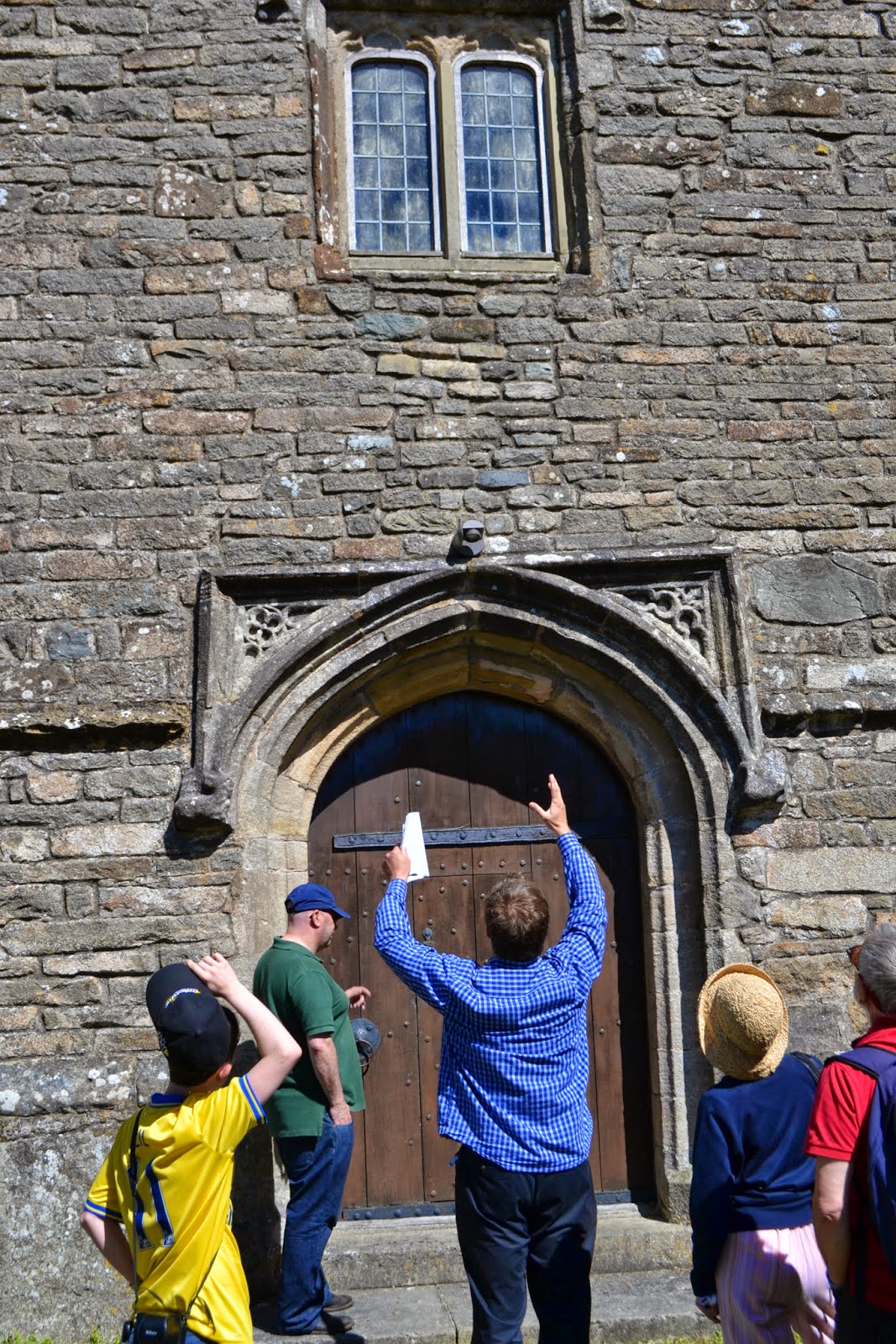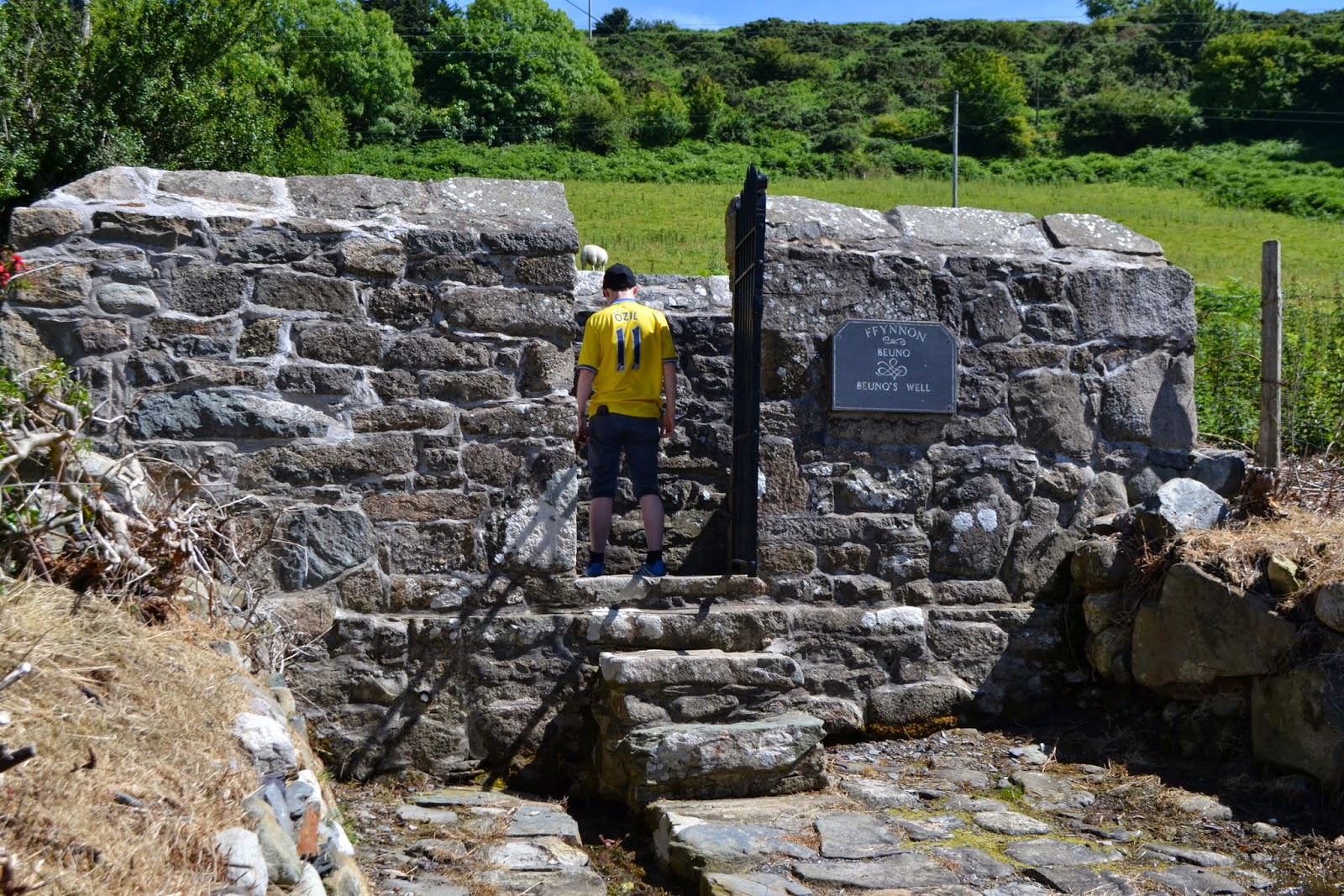Last Saturday, Peter was lucky enough to attend an archaeology walk at Clynnog Fawr. The walk was led by Mr Rob Evans of the
Gwynedd Archaeological Trust and was well attended as the weather was fantastic.
 |
| As you can see from the above map, Clynnog is positively stuffed with points of historical interest! The red line traces a circular route that can be walked (at low tide) starting at Clynnog and then heading to the coast, and then back along the main road. |
 |
| St Beuno's church is unusually large for the area, due to its status as an assembly point for pilgrims on the way to Bardsey. The site was already important as the location of St Beuno's ministry, and donations from the pilgrims allowed for the construction of an impressive and spacious church. |
 |
| The entrance to the chapel of St Beuno. This is a smaller chapel to the side of the main church, that is not usually open to the public. |
 |
| A pilgrim's stone within the chapel. Traditionally pilgrims would trace out the shape of the cross with a finger to bless themselves. |
 |
| Just outside the church is a private house that used to be a coaching inn. |
 |
| The eastern end of the church was typically reserved for important members of the community, such as the priest or local aristocracy. |
 |
| A sundial in the churchyard. Unfortunately the "gnomon" or spike that casts the shadow on the dial is missing. |
 |
| St Beuno's well on the west of the village. Many of the holy wells in this part of Wales are in fact pre-Christian in origin. The earlier celtic religion considered pools of water to be sacred portals between this world and the world of the spirits. When Christianity took hold in the area, the wells were incorporated into the new religion as sites of healing that were blessed by a local saint. It could be argued that this was a means of easing the conversion of non-Christians, by incorporating traditions with which they were already comfortable and familiar. |
 |
| North of the village is a cromlech. These structures are reasonably common in north Wales and Anglesey. Although they may superficially resemble a miniature stonehenge, they are actually supports for a burial chamber, and would have been completely concealed by a mound of earth after erection. Tombs such as these would have been prepared for important personages, such as a local chieftain. |
 |
| If you look closely, you may be able to make out some small circular depressions here on the capstone of the cromlech. It is thought that these were carved out deliberately and have some sort of religious significance. |

No comments:
Post a Comment